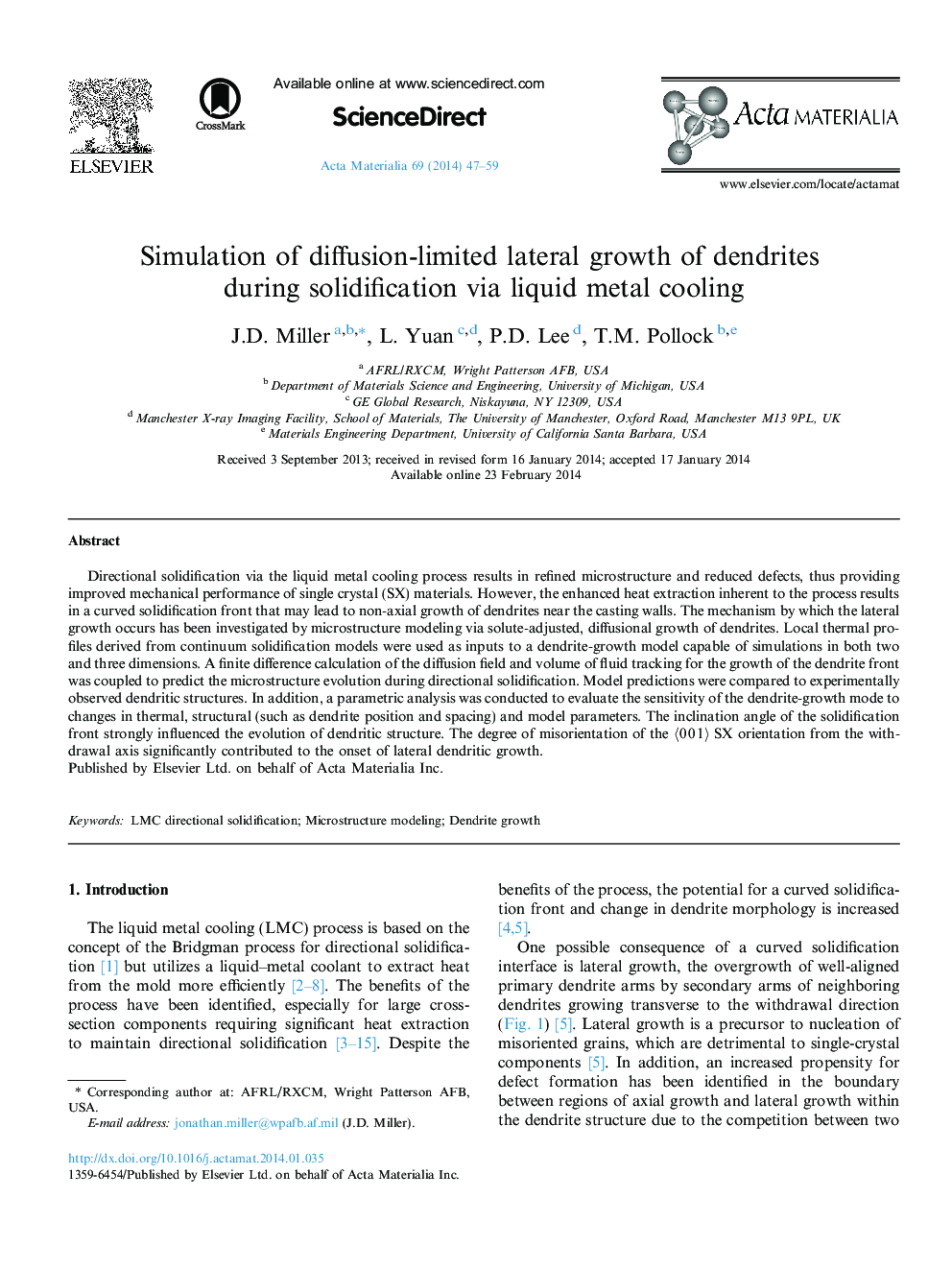| Article ID | Journal | Published Year | Pages | File Type |
|---|---|---|---|---|
| 7882103 | Acta Materialia | 2014 | 13 Pages |
Abstract
Directional solidification via the liquid metal cooling process results in refined microstructure and reduced defects, thus providing improved mechanical performance of single crystal (SX) materials. However, the enhanced heat extraction inherent to the process results in a curved solidification front that may lead to non-axial growth of dendrites near the casting walls. The mechanism by which the lateral growth occurs has been investigated by microstructure modeling via solute-adjusted, diffusional growth of dendrites. Local thermal profiles derived from continuum solidification models were used as inputs to a dendrite-growth model capable of simulations in both two and three dimensions. A finite difference calculation of the diffusion field and volume of fluid tracking for the growth of the dendrite front was coupled to predict the microstructure evolution during directional solidification. Model predictions were compared to experimentally observed dendritic structures. In addition, a parametric analysis was conducted to evaluate the sensitivity of the dendrite-growth mode to changes in thermal, structural (such as dendrite position and spacing) and model parameters. The inclination angle of the solidification front strongly influenced the evolution of dendritic structure. The degree of misorientation of the ã0Â 0Â 1ã SX orientation from the withdrawal axis significantly contributed to the onset of lateral dendritic growth.
Related Topics
Physical Sciences and Engineering
Materials Science
Ceramics and Composites
Authors
J.D. Miller, L. Yuan, P.D. Lee, T.M. Pollock,
